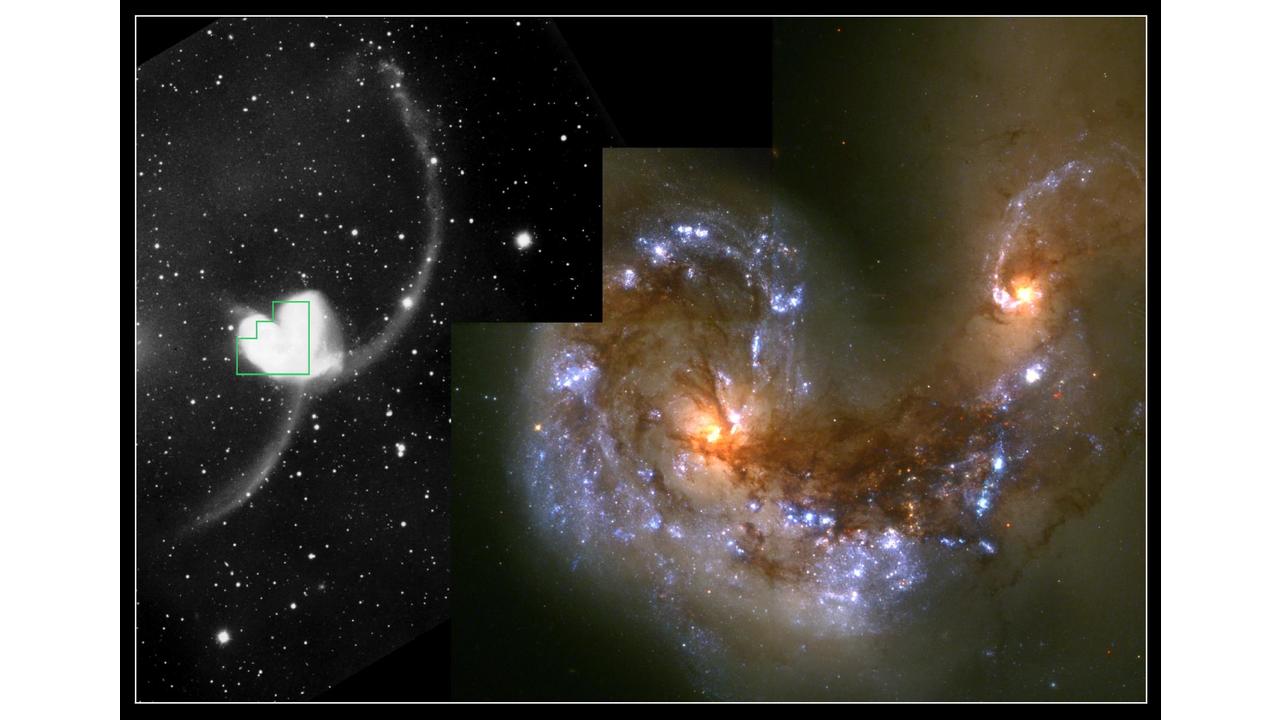The Comet, the Whale, and the Hockey Stick.
Image Credit & Copyright: Grand Mesa Observatory, Terry Hancock / Tom Masterson
NGC 4631 (left) and NGC 4656 (right). Photo: Mark Hanson.
Click on the image to see a larger size.
Got to show you my favorite picture of NGC 4631 and NGC 4656. It is the picture at right by Mark Hanson, and it has been picked as the "Space Porn of the Day Picture". Do click on the image to see a larger size of it!
Note that NGC 4631 has a bright (but dust-reddened) yellow center. It has a blue disk peppered with pink emission nebulas (click on the image at right to see them). Note the soft sometimes bluish but often beige light that seems to envelop the entire galaxy. That is the thick disk of NGC 4631, which may have been puffed up due to interactions between the large galaxy and its small companion galaxy, NGC 4627.
Note how different NGC 4656 is. There is just a hint of yellow at its center. There are no visible pink emission nebulas. There is no thick disk enveloping the galaxy. In short, NGC 4656 is "
all blue"! I must love it, right? No, I think it is rather boring. Galaxies should be both blue, yellow and pink, in my opinion - or at least
blue and
pink!

GALEX, the now-defunct space telescope that photographed galaxies in ultraviolet light at two wavelengths, far ultraviolet (mapped as blue) and near ultraviolet (mapped as yellow), picked NGC 4656 as "the most far-ultraviolet" galaxy on a
poster of ultraviolet atlas of nearby galaxies! Can you see NGC 4656 at top left in the image at right? NGC 4631 is the third galaxy from the left in the second row from the top.
Anyway, NGC 4656 is
a mystery to me. How did it get that way? It looks as if NGC 4656 started out as a puny little galaxy with a puny little barely yellow center, and then all of a sudden, BANG! It somehow received a tremendous helping of gas. Maybe it had to to the with "blade" of the hockey stick, which may be an interacting galaxy. In any case, NGC 4656 started forming bright blue stars all over itself, used up of all its gas, dispersed its nebulas, blew away all of its dust, and - well, this all-blue ghost of a galaxy is all that remains!

We talk about elliptical galaxies as red and dead, but NGC 4656 appears to be blue and dead!

But there is a lot of "life" going on around NGC 4631, which is one of my favorite galaxies! And I've got to admit that even if I spoke kind of harshly of NGC 4656, the probably interacting pair of NGC 4631 and NGC 4656 makes for a splendid sight at least in photographs!
Ann
 The Comet, the Whale, and the Hockey Stick
The Comet, the Whale, and the Hockey Stick






